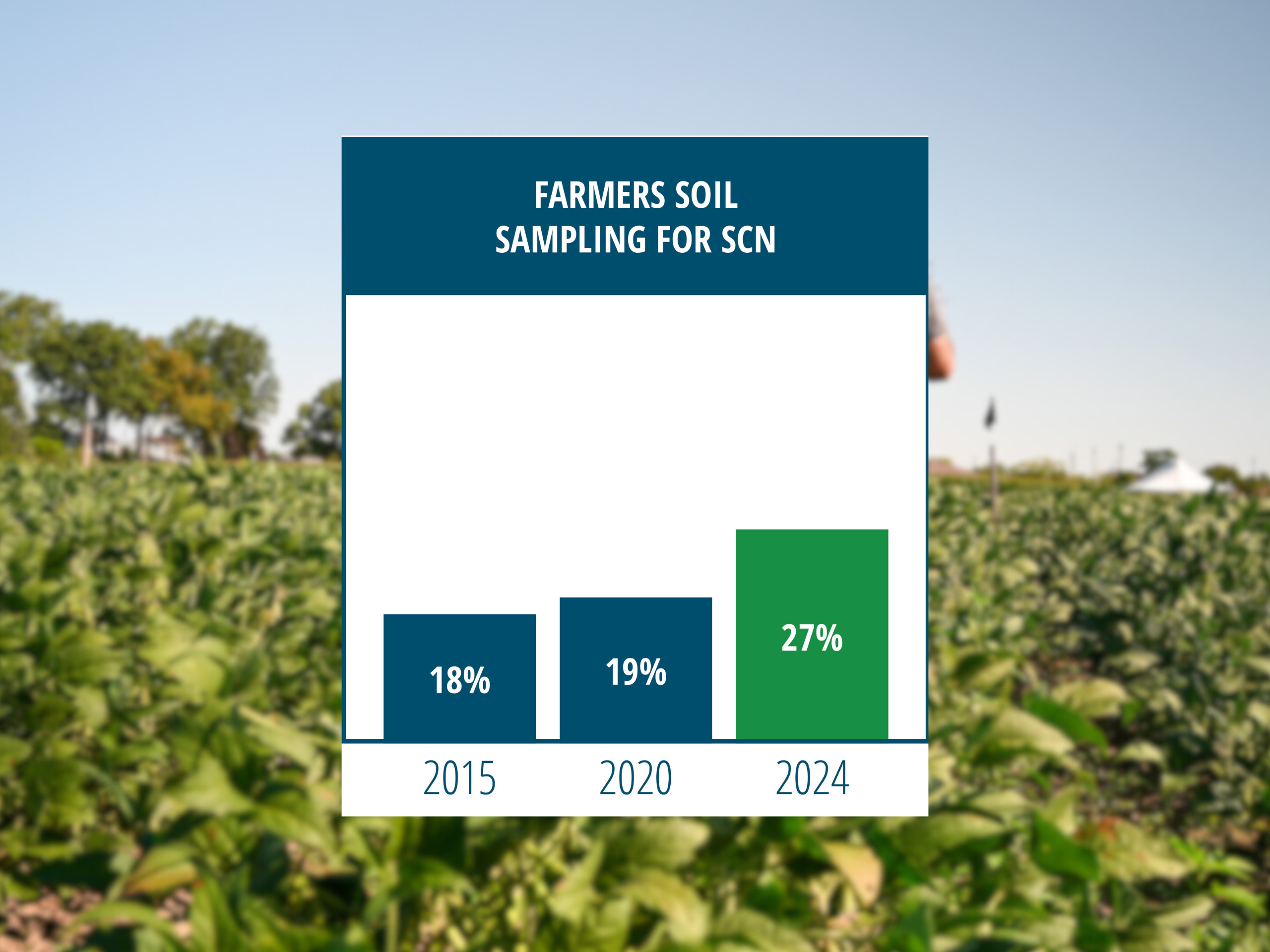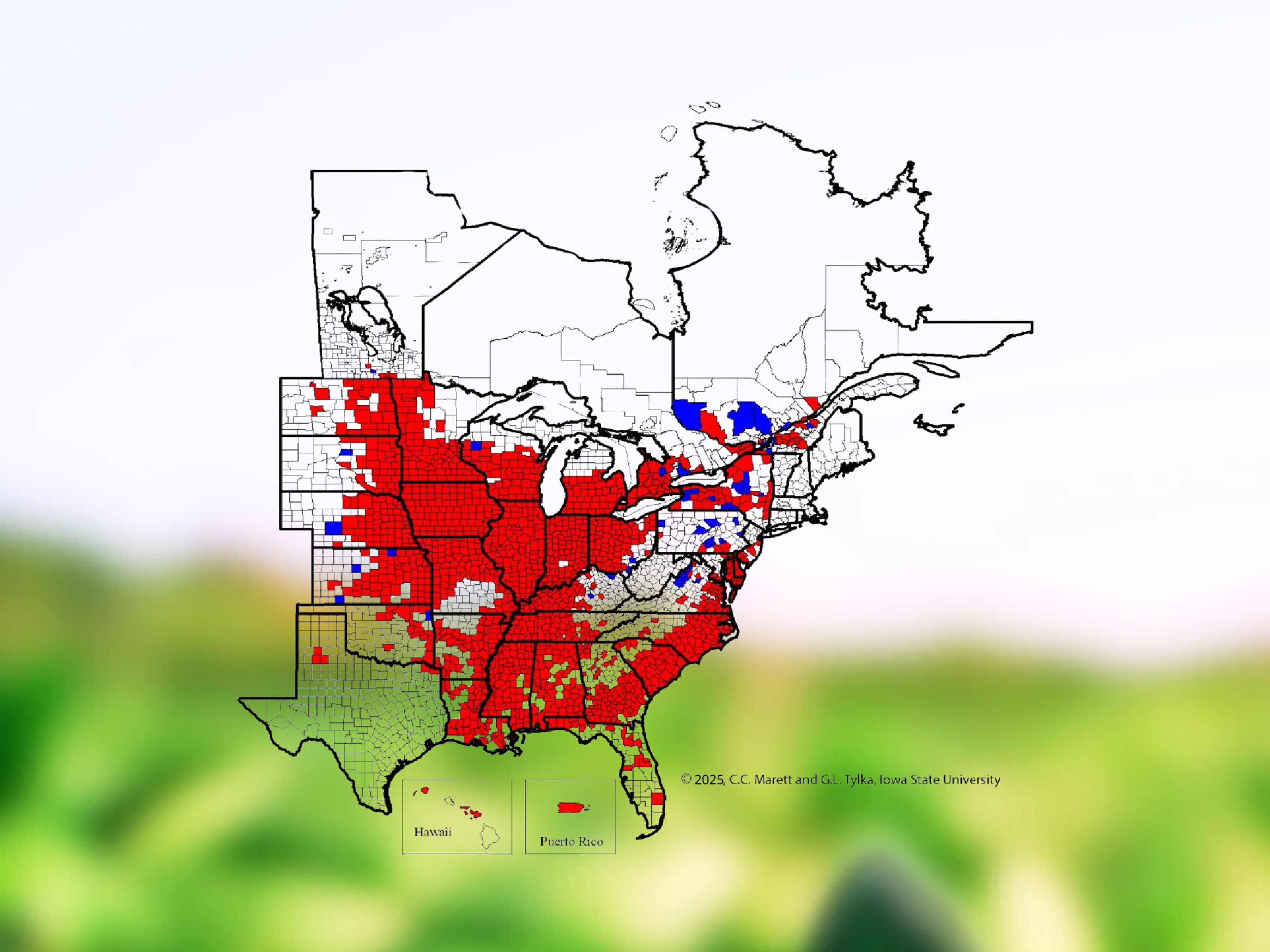
Waukesha, Wis. (Dec. 11, 2018) – The SCN Coalition encourages soybean farmers who “took the test to beat the pest” using a soybean soil test this fall to develop a soybean cyst nematode (SCN) management strategy for the 2019 growing season. “Now that you’re armed with egg counts, you and your advisors can use that data to actively manage SCN,” says Carl Bradley, plant pathologist from the University of Kentucky and a leader of The SCN Coalition.
“It’s human nature to want to know if an egg count from a sample is low, medium or high when you get results back,” Bradley adds. “Generally speaking, if soybeans will be the next crop grown, anything below 2,000 eggs is considered low, 2,001 to 12,000 eggs is medium and 12,000+ is considered high. If corn, wheat or another nonhost crop will be grown in 2019, your SCN numbers will drop, so the low/medium/high categories are higher.”
Bradley cautions growers that this example is not applicable to all states or regions. “Always check with your state land grant university or lab that processed your samples,” he says.
The good news is that no matter how high your SCN numbers, there are several management tools available to protect future soybean yields. These include rotating SCN-resistant varieties and genetic sources of resistance, rotating to nonhost crops and considering nematode-protectant seed treatments.
Why it pays to know your SCN egg numbers
Regardless of cropping decisions in 2019, Bradley says it still pays to know your SCN egg counts. Multiple surveys across the soybean-producing region – including Kentucky, Illinois, Indiana, Michigan, Minnesota, Missouri, Ohio, Ontario, South Dakota, Tennessee and Wisconsin – show SCN populations increasingly able to feed and reproduce on varieties with the PI 88788 source of resistance.
“PI 88788 is used in 95 percent of commercial soybean varieties,” Bradley continues. “In other words, SCN is becoming resistant to the resistance. And research shows that as SCN populations increase on PI 88788 varieties, yields can decrease by as much as 14 bushels per acre. So unfortunately, a farmer who has been planting resistant varieties and assuming SCN egg counts are low could be very much mistaken.”
Get state-specific advice
SCN’s ability to overcome PI 88788 resistance varies by state. The same is true of farmers’ cropping and SCN management options. That’s why the coalition offers state-specific advice at TheSCNcoalition.com. You’ll find this information in both the Recommendations and University Partners sections of the website.
In Missouri, for example, 100 percent of SCN populations can reproduce on PI 88788, up from 52 percent in 1992. “We also see as many as six generations of nematodes reproducing per growing season,” says Kaitlyn Bissonnette, University of Missouri plant pathologist. “As a result, SCN counts can quickly elevate to yield damaging levels. Therefore, it’s critical farmers know their SCN egg counts and the source of resistance in the seed they purchase.”
For farmers who don’t yet know their numbers, there’s still time. “You can take soil samples until the ground is frozen,” Bradley says. “Or you can always sample next spring.”
About The SCN Coalition
The SCN Coalition is a public/checkoff/private partnership formed to increase the number of farmers who are actively managing SCN. Our goal is to increase soybean farmers’ profit potential and realize higher yields. Partners in The SCN Coalition include university scientists from 28 states and Ontario, grower checkoff organizations including the North Central Soybean Research Program, United Soybean Board and several state soybean promotion boards, and corporate partners including BASF, Bayer, Growmark, DuPont Pioneer, Syngenta and Winfield United.



